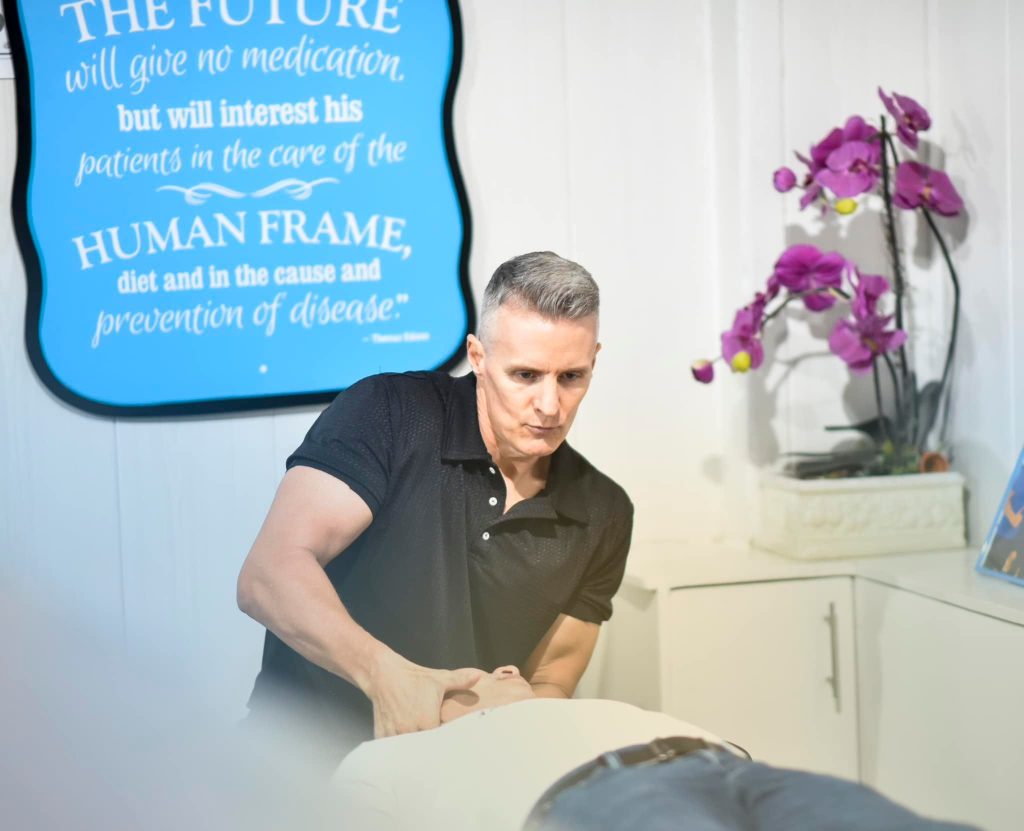
In-Depth Guide to Understanding and Managing Sciatica
Introduction
Sciatica is a neurological condition that manifests as pain along the sciatic nerve, which is the longest nerve in the body. This condition primarily affects one side of the body and can cause pain, numbness, and discomfort from the lower back down to the legs. The severity of sciatica symptoms can range from mild discomfort to severe and debilitating pain.
Understanding Sciatica
Causes of Sciatica
- Herniated Disk: The disks act as cushions between the vertebrae in your spine. When a disk herniates, its inner gel-like core leaks out, putting pressure on the sciatic nerve.
- Spinal Stenosis: This is the narrowing of parts of the spine, which can compress the nerves, including the sciatic nerve.
- Piriformis Syndrome: This occurs when the piriformis muscle, located in the buttock region, becomes tight or spasms, pressing on the sciatic nerve.
- Spondylolisthesis: This condition occurs when one vertebra slips forward over another one, pinching the sciatic nerve.
Symptoms of Sciatica
- Pain: This can vary from a mild ache to a sharp, burning sensation or excruciating discomfort, often worsened by sitting.
- Numbness and Tingling: These sensations are commonly felt in the leg or foot on the affected side.
- Weakness: A reduction in strength in the affected leg or foot.
- Pain Exacerbation with Movements: Certain actions, like standing up or twisting, can increase the pain.
Treatments for Sciatica
Immediate Relief for Sciatica Pain
- Cold Packs: Applying cold packs to the affected area during the first 48 hours can help reduce inflammation and numb the area temporarily.
- Hot Packs: After the initial two days, using heat can help relax the affected muscles and reduce pain.
Sciatica Therapies
- Physical Therapy: This involves personalized exercise programs aimed at strengthening the back, improving alignment, and facilitating movement.
- Medications: NSAIDs (e.g., ibuprofen) or oral steroids can be prescribed to reduce inflammation and alleviate pain.
Supportive Therapies for Sciatica
- Acupuncture: Involves inserting needles into specific points on the body, which can help release endorphins and reduce pain sensation.
- Massage Therapy: Helps in relaxing muscle spasms, improving circulation, and easing sciatic pain.
Best Practices for Sciatica Treatment
- Combination Therapy: An integrated approach combining physical therapy, chiropractic adjustments, and appropriate medication often yields the best results.
- Exercise and Stretching: Specific exercises designed to target the core and lower back muscles can help relieve pressure on the sciatic nerve.
At-Home Treatments for Sciatica
- Stretching Exercises: Simple stretches for the lower back and legs can improve flexibility and reduce nerve pressure.
- Over-the-Counter Pain Relievers: Drugs like ibuprofen can provide temporary relief from sciatica pain.
- Maintain Good Posture: Proper body alignment while sitting and standing can prevent exacerbation of sciatica.
Choosing Effective Pain Relief Methods
- Professional Consultation: Always consult healthcare professionals to determine the safest and most effective sciatica treatments based on your symptoms.
- Monitor Symptoms: Regularly assessing your symptoms can help you and your healthcare provider adjust your treatment plan as needed.

Guide to Chiropractic Care for Sciatica
Chiropractic care is a non-invasive discipline that focuses on diagnosing, treating, and preventing mechanical disorders of the musculoskeletal system, particularly the spine. Its core philosophy revolves around the body’s inherent recuperative power to heal itself without the use of drugs or surgery, emphasizing the relationship between structure and function.
Understanding Chiropractic Care
Chiropractic care is rooted in the concept that proper alignment of the body’s musculoskeletal structure, especially the spine, will enable the body to heal itself. For sciatica, chiropractic treatment aims to provide pain relief and improve body function by correcting alignment and reducing pressure on the sciatic nerve.
Chiropractic Techniques for Sciatica
- Spinal Adjustments (Spinal Manipulation): This is the most common chiropractic technique. It involves the chiropractor applying controlled force to the spine, which can range from gentle to strong pressure, to improve motion and alignment. This treatment aims to reduce nerve irritability responsible for inflammation, pain, and muscle spasms related to sciatica.
- Manual Therapy: Beyond adjustments, chiropractors may also use manual therapy to treat sciatica. This can include:
- Soft Tissue Therapy: Used to relax tight muscles, relieve spasm, and release tension in the fascia (the connective tissue surrounding the muscles).
- Manual Joint Stretching and Resistance Techniques: These techniques can help reduce sciatic pain by alleviating nerve pressure.
- Decompression Therapy: This technique involves stretching the spine using a traction table or similar motorized device to relieve pressure off compressed discs and nerves.
The Effectiveness of Chiropractic Adjustments
Research suggests that chiropractic adjustments can be effective in treating sciatica associated with a herniated disc or spinal compression. These adjustments aim to reposition the affected disc and vertebrae, potentially providing immediate relief from sciatic nerve pain. The chiropractic approach often involves a series of spinal adjustments over several weeks, alongside complementary therapies such as ice or heat therapy, electrical stimulation, and exercises for rehabilitation.
Complementary Chiropractic Therapies
- Ice/Cold Therapy: Reduces inflammation and helps to control sciatic pain.
- Ultrasound: A gentle heat created by sound waves that penetrates deep into tissue. Ultrasound increases circulation and helps to reduce muscle spasms, cramping, swelling, stiffness, and pain.
- TENS (Transcutaneous Electrical Nerve Stimulation): A small, battery-powered machine stimulates the muscles. Various intensities of electrical current control pain and reduce muscle spasms.
Lifestyle Changes and Chiropractic Recommendations
Chiropractors may also provide guidance on lifestyle changes that can help manage sciatica symptoms and prevent them from returning. This includes nutritional advice, techniques for proper posture, exercises to strengthen the muscles that support your back, and guidelines on how to lift objects safely.
Who Should Consider Chiropractic Care?
Chiropractic care can be a suitable option for those seeking a non-surgical and drug-free treatment method. It is particularly beneficial for individuals who have chronic sciatica and have not responded well to other treatment types. However, patients with severe sciatica requiring immediate surgical intervention may need to explore other treatments.
Conclusion
Chiropractic care offers a holistic approach to treating sciatica, focusing not only on relieving symptoms but also on helping the body maintain its optimal health. By integrating spinal adjustments, manual therapies, and lifestyle modifications, chiropractic care can be a vital part of managing sciatica effectively. Always consult with a licensed chiropractor to discuss the most appropriate treatment options for your specific condition.
About the Author Doc Rob
Doc Rob is a man with a mission and outside of the transformations, he performs day in and day on his patient's health and well-being you can always find him out there in the local Filipino community helping to educate and improve the lives of everyday people with the Doc Rob Wellness Mission.
Popular posts
Session expired
Please log in again. The login page will open in a new tab. After logging in you can close it and return to this page.
